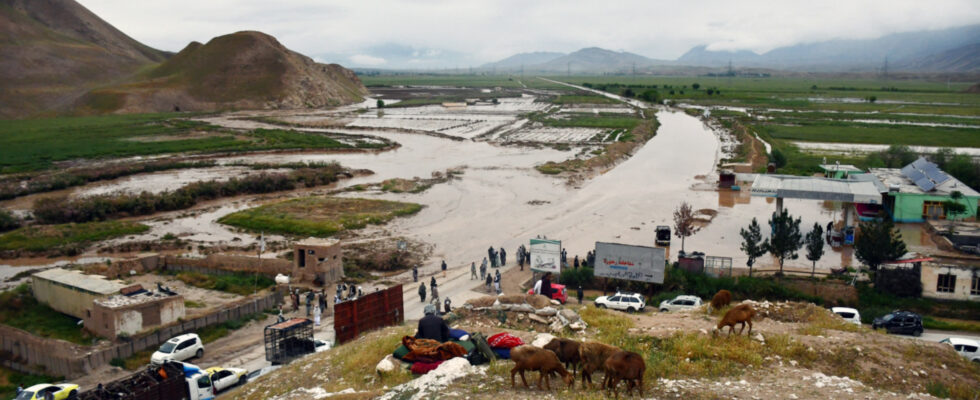Rescue efforts are underway on Saturday in the north-east of Afghanistan ravaged by flash floods which, according to the UN, left more than 200 dead in one day and in a single province. A state of emergency was declared in vast regions where rivers of mud suddenly engulfed thousands of homes and hectares of crops, the Defense Ministry announced.
“More than 100 people died in the district of Baghalan Jadid” in Baghlan and “100 people were killed” in that of Burqa, an official from the International Organization for Migration (IOM) announced to AFP, listing more than 2,000 houses destroyed.
One of the most vulnerable countries to climate change in the world
IOM added that several deaths were recorded in six other districts of Baghlan, again based on figures provided by ANDMA, the National Disaster Management Authority. The provincial authorities had stuck to a death toll of 62 since the day before, while warning that it “would probably increase”.
The floods in this abnormally rainy spring also affected other provinces of Afghanistan, one of the countries most vulnerable to climate change in the world, but also one of the most poorly prepared for its consequences according to scientists.
Government spokesperson Zabihullah Mujahid told AFP on Saturday morning of “dozens of deaths” in various provinces of the country, one of the poorest in the world. The day before, he had expressed “the deep sympathy” of the authorities to the victims of the floods, citing on
“My house and my whole life were taken away”
The Ministry of Defense indicated on Saturday that “operations to distribute food, medicine and first aid kits to victims had started” in the northeast. “The air force began evacuating residents as the weather improved” and transferred more than a hundred wounded to hospitals, he added.
Jan Mohammad Din Mohammad, a resident of Pol-e Khomri, capital of Baghlan, told AFP that the house he had built with his own hands had been completely destroyed. “I was called to say my house was flooded,” said the 45-year-old man. “By the time I got there, there was nothing I could do.” “I saw my family running towards the hills. My house and my whole life were taken away. It was unimaginable.”
He reported three deaths, including two children aged eight and 16, in his neighborhood where people “suffered a lot”. “I don’t know where to take my family,” he added of his wife, their six children, his mother and his disabled sister.
Since mid-April, flash floods and floods have already caused around a hundred deaths
Furthermore, disaster management authorities in Takhar province, neighboring Baghlan, reported 20 deaths and 14 injured on Friday. “In addition to the human losses, these floods have caused gigantic financial losses,” an official from this department told AFP.
The American envoy for Afghanistan, Rina Amiri, wrote on She asked the Taliban “to tackle the devastation caused by climate change” in the country already devastated by four decades of war.
Since mid-April, flash floods and floods have already caused around a hundred deaths in ten provinces of the country and no region has been spared. They also destroyed hundreds of homes and submerged much agricultural land in a country where 80% of the more than 40 million Afghans depend on agriculture for their survival. Afghanistan experienced a very dry winter, making it difficult for the soil to absorb rain.
